Coyotes are beautiful creatures, smaller and leaner than wolves but more wild looking than most dog breeds. Their foxy appearance and wild nature lead many dog lovers to wonder, could you keep a coyote as a pet? Although you technically could try to domesticate a coyote, you aren’t likely to be successful, and they aren’t the best option for family pets. But thankfully, we have a solution for you.
Despite being wild animals, coyotes, like foxes, are cute. There are over 280 dog breeds for you to choose from, but only a handful look a bit like coyotes. If you want to welcome a taste of the wild into your home without any of the wild, here are the most similar-looking breeds. Some of them have comparable foxy-looking faces. Others are so similar they might make you double-take on a wild walk.
Although every dog in this list looks like a coyote in one way or another, their personalities differ. Some are protective dog breeds, and others are sledding breeds whose breed purpose determines their character. So, look through the whole list to find the pup that best suits you and your lifestyle. In alphabetical order, let’s look at dogs that look like coyotes.
11 Dogs That Look Like Coyotes
Coyotes are wild animals from the same family as the dog, known as the canis genus. Coyotes weigh between 15 and 46 pounds, making them small to medium-sized in the dog world. They have very thick and dense coats that are usually a mixture of light gray, red, or fulvous, a dull shade of orange mixed with white and black. Their large triangular ears and bushy tail give them a foxy appearance. Let’s look at the dog breeds that look most like coyotes.
Akita Inu

The Akita Inu is one of the most loyal dogs you can have, forming a bond with their humans like no other. So this could be your top pick if you’re after a dog that looks like a coyote but loves humans. Akitas are courageous, protect their family in the face of danger, and take on bears and other large game.
Akitas are much larger than coyotes, weighing between 70 and 130 pounds, and great for cuddling on the sofa. Their thick and dense coats keep them warm, and many Akita’s sport coat colors are similar to the coyote. They have triangular ears and sweet, dark brown eyes. Their curly Catherine-wheel tail is the only giveaway they’re not a coyote.
Czech Wolfdog
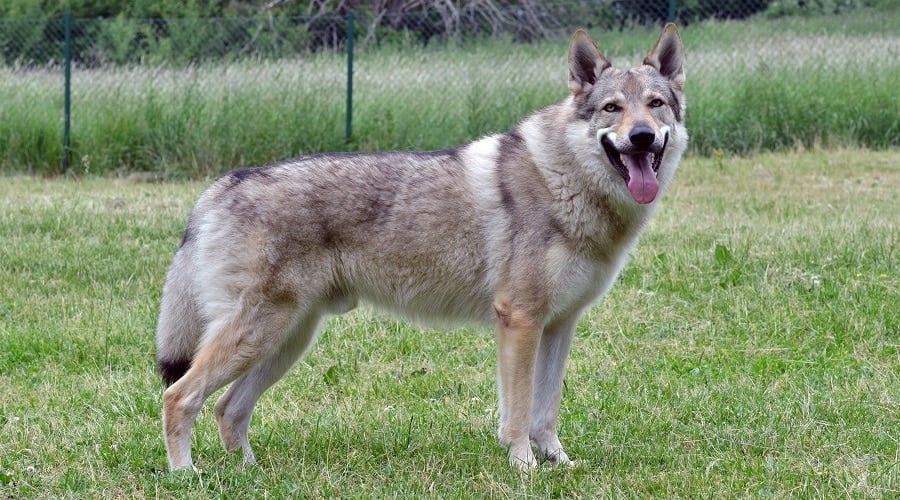
The Czech Wolfdog, short for Czechoslovakian Vlack, is a relatively new dog breed that was the result of a biological experiment that took place in 1955. The CSSR of that time wanted the wolf’s usable qualities and the dog’s friendlier characteristics. So they bred wolves with German Shepherds, resulting in a friendly but hardy and seriously active pooch. They need a very active family and plenty of time outside to run, exercise, and play.
Czech Wolfdogs are very affectionate and bond closely with their family, protecting them and their home. They are also very similar to coyotes in appearance. They weigh up to 57 pounds and have a foxy faces. Their coat is very thick to keep them warm, and it is orange and gray with bushy tails, almost identical to some coyotes. Plus, their golden eyes might convince you they are, in fact, a wild coyote.
Finnish Spitz

Like the coyote, which translates to “barking dog,” the Finnish Spitz has earned a similar nickname, the “barking bird dog.” They are small and courageous hunting dogs who concentrate on gamebirds. Their unique hunting style mesmerizes the birds with their slow-wagging curly tail and distinctive yodeling, allowing their master to shoot the bedazzled bird. These guys can bark up to 160 times a minute. So, if you like the coyote’s calls, this could be an excellent option for you.
Their coat is thick, dense, and red-gold, similar to some coyotes’ coats. The giveaway here is their dark brown eyes and curled tail that sits along the spine. This pup is incredibly affectionate and great with kids, unlike coyotes, who aim to avoid humans.
Italian Wolfdog

The Italian Wolfdog, also known as Lupo Italiano, is supposedly a wolf hybrid produced from crossing a German Shepherd and an Italian wolf. However, genetic research throws this claim into doubt. This breed is not recognized by any kennel club but is governed by the Associazione degli Affidatari Allevatori del Lupo Italiano (AAALI). They only lease these dogs to police and search and rescue organizations, so you cannot own one of them as a pet.
Their thick coat sports various shades of gray with fulvous and beige markings, and they have similarly long and pendulous tails. The main difference is that they usually weigh between 70 and 90 pounds, making them much more significant than coyotes.
Korean Jindo

Commonly known as Jindo, this Korean pooch weighs between 30 to 50 pounds, making them slightly larger than most coyotes. But it is their foxy face that links them to the coyote. Their narrow muzzle, alert eyes, and erect triangular ears give them a watchful and intelligent look. Jindos are naturally wild-looking, and their thick coats and colors are similar.
This breed is scarce in America and not officially recognized by the American Kennel Club (AKC.) Jindos make an excellent family pet for those with experience, but they are not keen on other dogs. Watch out for their ability to escape. They might be tempted to join a pack of wild coyotes if they can.
Kugsha Dog
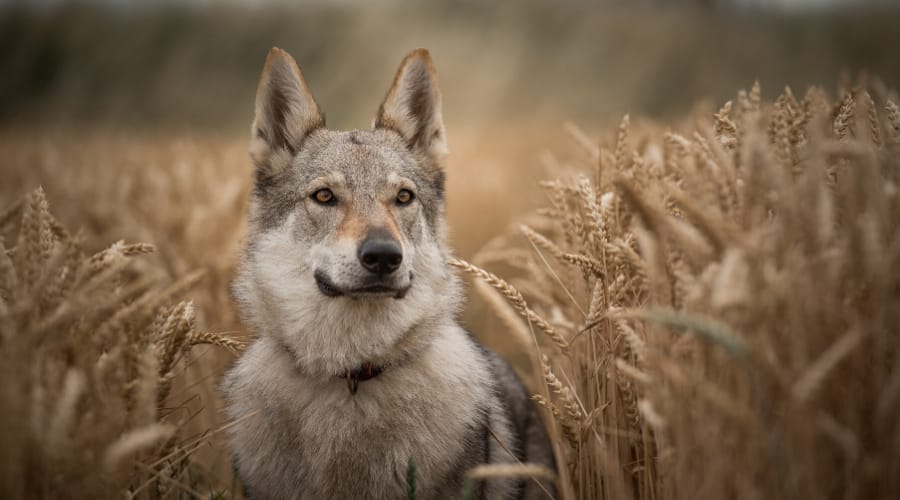
The Kugsha is not recognized by any kennel club. They are a wolfdog hybrid, although not much is known about them. It is believed that they were developed in Pennsylvania and resulted from wolf and Malamute breeding. Kugshas retain their independent and wild traits, making them extremely difficult to domesticate. This is why they are so rare and rarely seen in the family home, and only breeders who dedicate their time to wolf hybrids are suitable.
They also go by the name Amerindian Malamute, and they look similar to coyotes but much bigger. They typically weigh between 60 and 110 pounds, making them one of the larger breeds on this list. Their fuzzy fur and erect triangular ears are similar to the coyotes and combine brown, gray, white, and fawn colors.
Saarloos Wolfdog
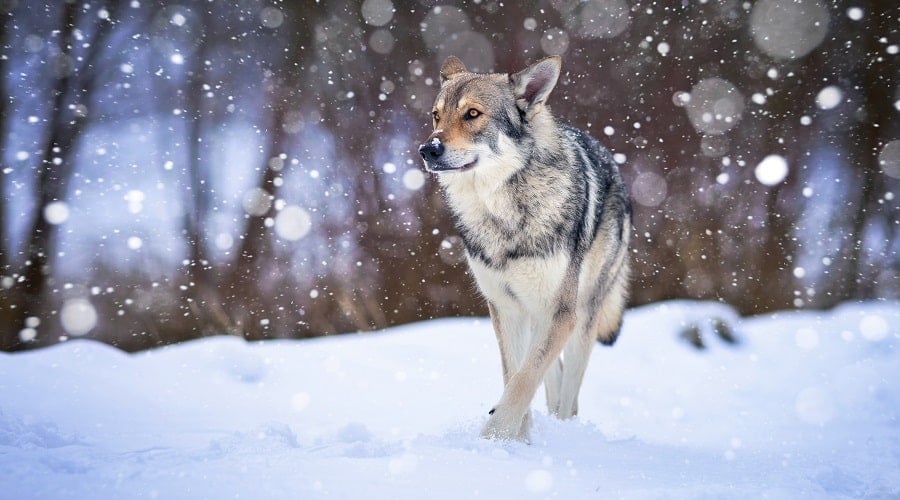
The Saarloos Wolfdog originates from Holland and is the result of crossing German Shepherds and Siberian gray wolves. The offspring were further bred with German Shepherds, creating a hybrid with 25% wolf blood. This pooch looks like a wolf, but there is a substantial coyote similarity, too, because they are leggy and leaner than wolves, reaching up to 30 inches tall.
Saarloos Wolfdogs can reach up to 100 pounds, making them much larger than coyotes. But they are light on their feet and have a similar wolf-gray, red, and white coats. They are high-energy dogs that are too much for most families to cope with and need lifelong training to keep them socialized and polite. Like the German Shepherd, this is a one-person dog.
Shiba Inu

The Shiba Inu is the most popular dog in America on this list, and the most popular companion dog in Japan, so you can be sure you’re getting a top family pup with this breed. Shiba Inus are affectionate with their family and good with children and some dogs. Originally bred as hunters, they still retain a high prey drive today.
They are one of the most foxy-looking dog breeds, weighing between 17 and 23 pounds. But don’t let their small size fool you. They are sturdy and muscular dogs with a confident character to match. They have smaller ears than the coyote but are triangular and just as alert. Their coat is usually black and tan, cream, or shades of red, similar to the colors coyotes sport.
Shikoku Ken

The Shikoku Ken is a rare dog breed outside of Japan. They were highly prized by Japanese hunters, the Matagi, as a tracker of wild boar and other game. They are relatively chilled as family pets if their exercise needs are met, and they can be a little shy with strangers. So if you are looking for a docile version of the coyote, this could be a top contender.
The Shikoku Ken is a medium-sized dog weighing between 35 and 55 pounds. They are shorter than many of the breeds on this list. Their pricked ears and thick coats resemble the coyotes and sport red, black and tan, or sesame colors. Their curled and fuzzy tail is what sets them apart from a coyote.
Siberian Husky
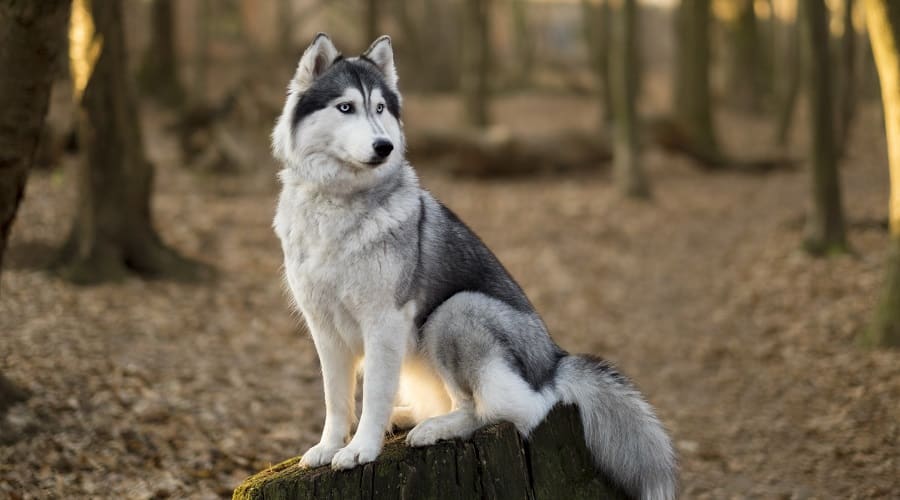
The Siberian Husky is one of the most popular dog breeds on this list, and most people have met or seen one. Just like the coyote, they are very vocal dogs that would happily howl all day long. But unlike many of the dogs on this list, they are relatively simple to train with consistent and early training compared to the wolf hybrids. They love children too, which is why they excel as a family companion.
Siberian Huskies have a very similar coat to coyotes because it is thick and dense, keeping them insulated. They weigh between 35 and 60 pounds, making them middle-of-the-road regarding their size. Their large ears, narrow muzzle, and bushy tail resemble the coyotes. But they have a cheeky grin spanning from ear to ear, giving them a mischievous look.
Tamaskan Dog
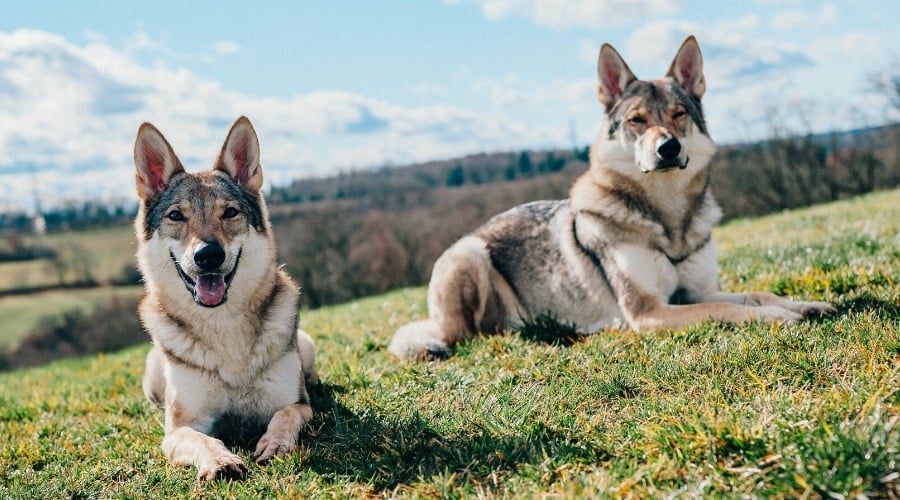
Tamaskans are another relatively new dog breed created by British breeders in the 1980s. They wanted to create a new pup with a wolf-like appearance and bred German Shepherds, Siberian Huskies, Alaskan Malamutes, and Samoyeds.
They are highly trainable and make incredible working dogs due to their strength and intelligence. But this makes them difficult for first-time owners, so those with previous training experience best keep them. But as all four dog founding breeds make lovely family pets, you can be sure the Tamaskan does too.
Final Thoughts
Depending on what type of family pet you want to add to your family unit, there are a few dog breeds to choose from. So, whether you’re looking for a foxy face Fido or a head-to-toe coyote puppy, you have many friendlier pups to choose from. Some on this list are strong-willed and need a strict owner to bring the best out of them. Others are easier to train for owners with less doggy experience. Pick the breed that’s right for you, and you are sure to find a best friend in your coyote lookalike.





